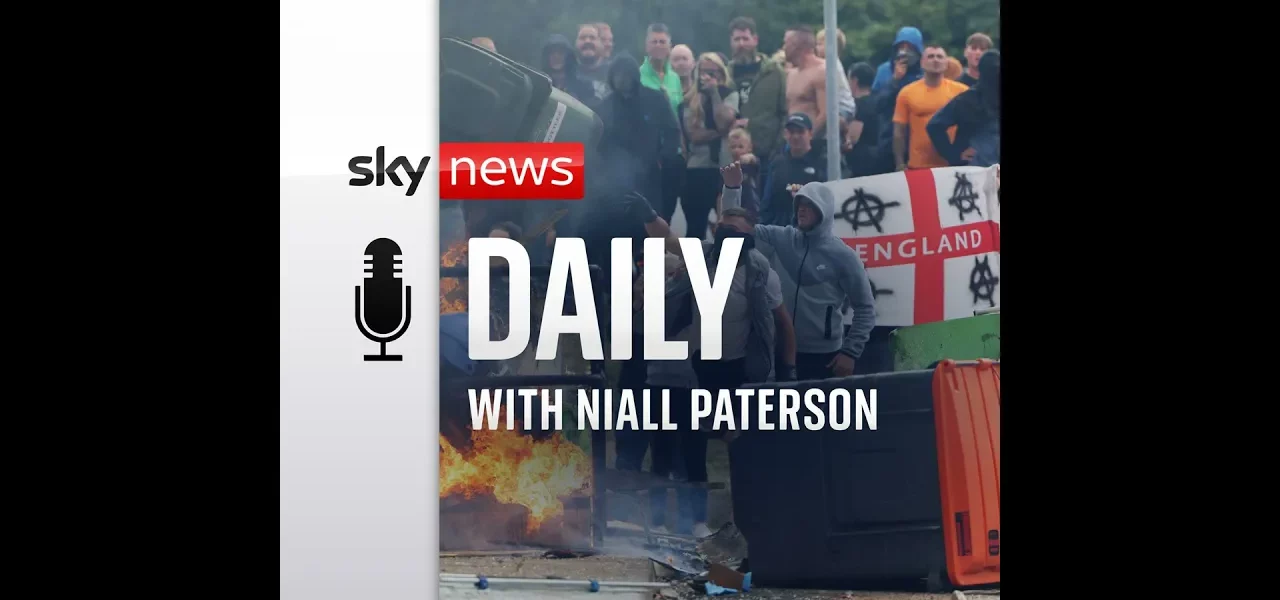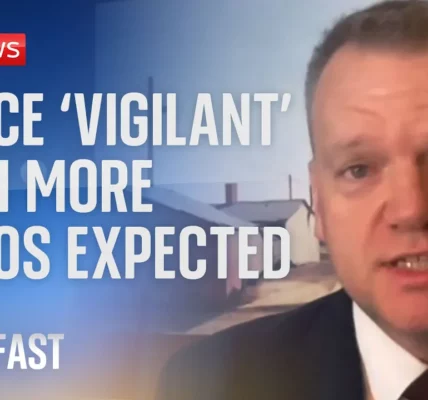UK Protests: Understanding the Violence and Government Response

In recent weeks, the UK has witnessed a surge in violence related to protests against immigration policies, sparking national conversations about societal issues and government accountability. Prime Minister Rishi Sunak and other officials have been faced with the challenge of addressing these violent outbursts while also managing the public’s concerns regarding immigration and societal cohesion.
Introduction
The recent protests across the UK, marked by violence and chaos, have raised significant concerns about the state of civil society. With reports of hotels housing asylum seekers being stormed, citizen advice centers attacked, and mosques vandalized, it is crucial to understand the underlying factors driving these protests. The violent reactions, ostensibly triggered by the tragic killing of three children in Southport, have prompted a strong governmental response, which includes heightened police support and a reassessment of judicial processes. This article delves into the events leading up to these protests, the government’s response, and the broader implications for society.
The Nature of the Protests
The protests that erupted over the weekend were characterized by a series of violent acts that have been widely condemned. While the initial protests were a reaction to the tragic events in Southport, the subsequent violence has been described by Prime Minister Sunak as “organized violent thuggery.” This characterization highlights the government’s stance on the issue and its implications for public safety and societal stability.
Overview of the Violence
- Storming of a hotel in Rotherham housing asylum seekers.
- Destruction of a citizen advice center in Sunderland.
- Vandalism of a children’s library in Liverpool.
- Attacks on mosques and looting of shops.
These incidents reflect a troubling trend of escalating violence that poses questions about the balance between lawful protest and criminal behavior.
Government Response to the Protests
In light of the violence, the government convened an emergency Cobra meeting to discuss its response. Key strategies outlined included:
- Support for Police: The government expressed its backing for police operations, providing them the necessary political cover to act decisively.
- Resource Allocation: Plans to deploy a standing army of specialist officers wherever needed, utilizing existing schemes that allow for resource sharing among police forces.
- Judicial Measures: The implementation of 24-hour courts and rapid charges for those involved in the riots, ensuring swift justice to deter further criminal behavior.
This multi-faceted approach aims not only to address immediate threats but also to deter potential future violence.
Political Implications and Responsibilities
The political ramifications of the protests and the government’s response are significant. Prime Minister Sunak’s labeling of the violence as “far-right thuggery” has raised concerns about the government’s approach to addressing the root causes of dissent.
Public Perception and Political Messaging
There is a growing sentiment among segments of the public that their concerns regarding immigration policies have been ignored. This discontent has manifested in protests, and the government’s refusal to engage with these underlying issues may further alienate constituents.
Some key points include:
- Many individuals feel their voices have been marginalized in political discourse.
- There is a perception that politicians are unwilling to have difficult conversations about immigration and its societal impacts.
- The rise of far-right groups has capitalized on these feelings of neglect, leading to increased tensions.
The Role of Political Leadership
Political leaders are tasked with navigating these complex societal issues while maintaining public order. As noted by political correspondent Rob Powell, the challenge lies in balancing immediate security concerns with long-term strategies to address the root causes of unrest. Failure to do so may result in a cycle of violence and discontent that could have lasting implications for the political landscape.
Personal Narratives and Societal Reflections
The narratives of individuals involved in these movements provide insight into the broader societal issues at play. Activists like Ivan Humble, who transitioned from a leader in the English Defense League to an anti-hate campaigner, illustrate the complexities of radicalization and the importance of dialogue in overcoming divisions.
Understanding Radicalization
Humble’s story underscores the necessity of addressing grievances within communities before they escalate into violence. His experience highlights key themes:
- The effects of feeling unheard and ignored by political leaders.
- The importance of open dialogue and mutual respect in bridging divides.
- The role of personal connections in combating radical ideologies.
Such narratives are crucial in understanding the broader context of protests and the motivations behind them.
Conclusion
The recent protests in the UK have brought to the forefront pressing issues surrounding immigration, societal division, and governmental responsibility. As violence continues to mar protests, it becomes increasingly essential for political leaders to engage with the underlying concerns of the populace. Addressing these issues through dialogue and proactive policies is critical for fostering a cohesive and peaceful society.
As we move forward, it is imperative for citizens and leaders alike to seek understanding, engage in meaningful conversations, and work towards solutions that respect all voices within the community. For more insights on societal issues and government policies, explore our related articles on immigration and community cohesion.
“`




